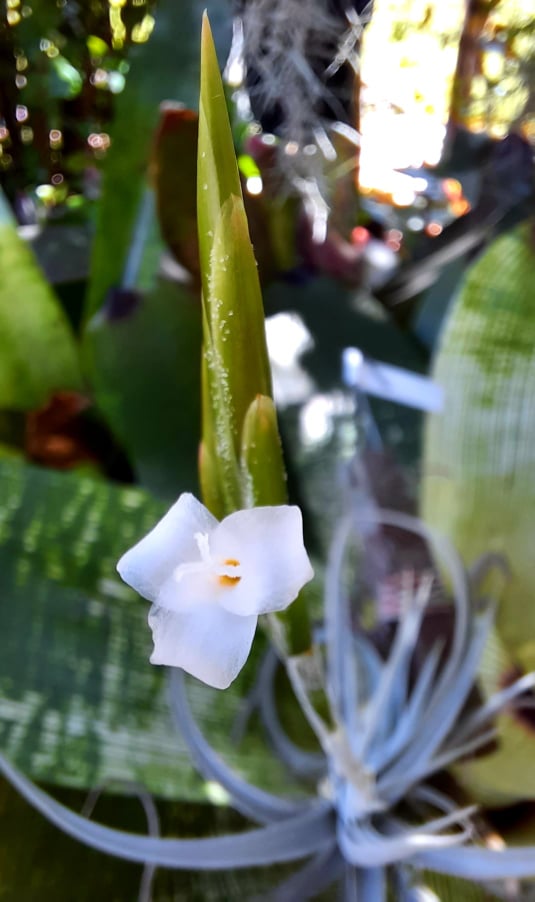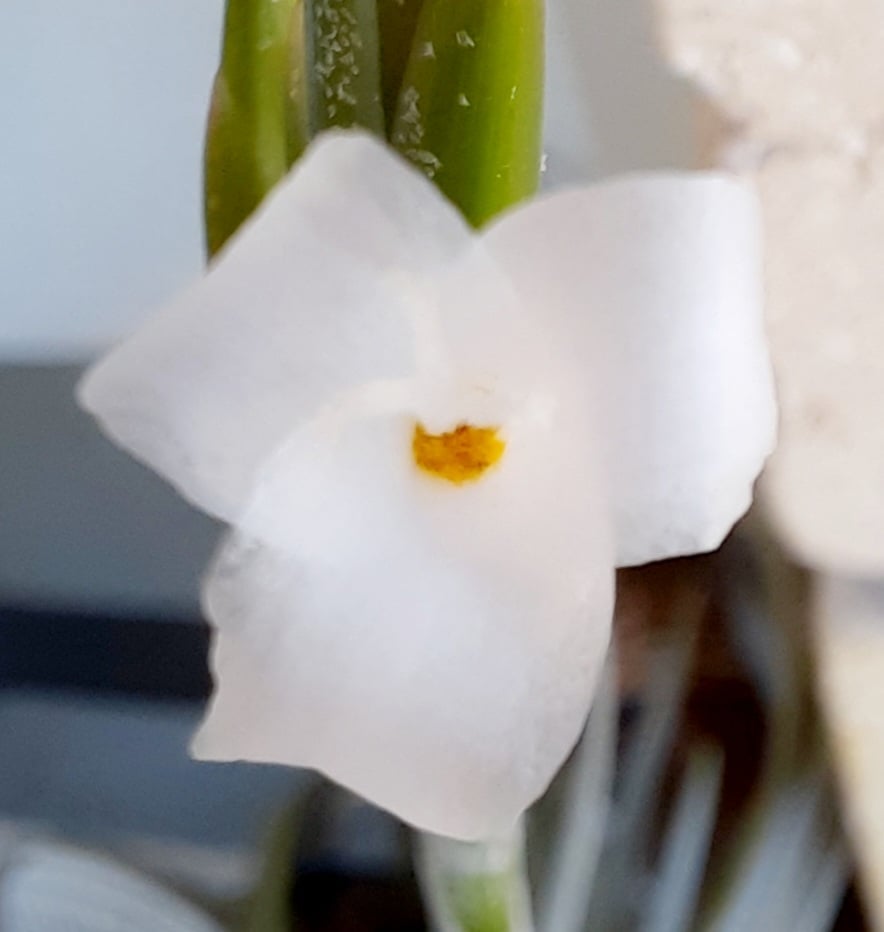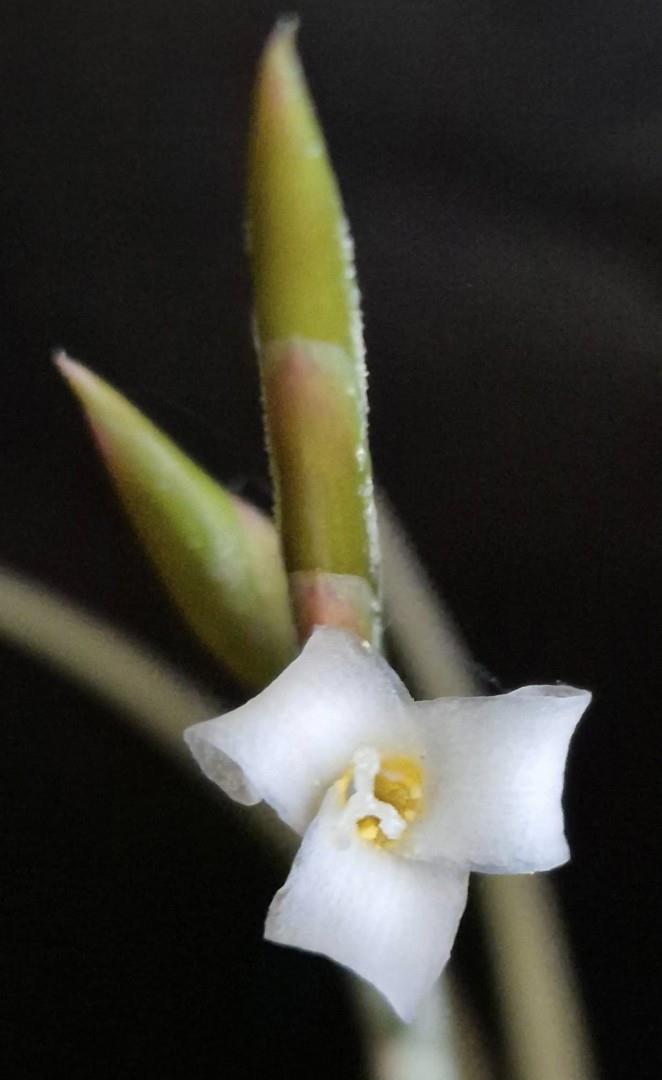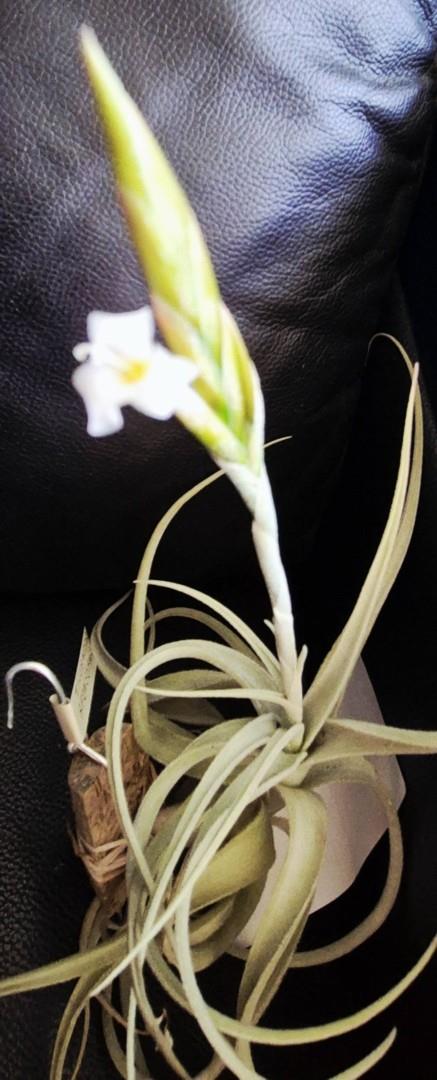




Diagnosis: Planta saxicola. caulescens; florens ad 25-30 cm alta. Folia cineria-lepidota; lamina ad 20-25 cm longa, ad 1.5-2 cm lata. Scapus inflorescentiae erectus or recurvatus. teres. 0.2-0.3 cm diametiens, viridis. cum inflorescentia ad 23-27 cm alta; 9-12 flora. Bracteae scapi foliis similes. longiores quam internodia. Bracteae florales ad 3-4 cm longae, ad 0.8-1 cm latae, viridi or rubrae. Sepala ad 2.2-2.5 cm longa. Petala ad 5-5.5 cm longa, apex acutis. alba.
Holotypus: BRASILIA. Rio Grande do Sul. Salto do Jacui, repressa de Itauba. 4. VIII. 1998. T. Strehl 499 (HAS 36901);
Paratypus: Salto do Jacui, repressa de Itauba, 24.XI. 1999. M. Rocha & T. Strehl 1164{HAS 101.077).
Plant saxicolous, roots present, very variable stem (5-15 cm long).
Leaves few (7-9), polystichous, at times distichous, erect or spreading, more or less curved or contorted, densely cinereo or ferrugineo tomentose lepidote;
Sheath 1.5-2 cm long, 1.5-2 cm wide, compactly imbricate, indistinct from the blade;
Blades narrow triangular, subulate, attenuate, grooved, 20-25 cm long, usually more shorter, 1.5-2 cm wide.
Scape a little incurved or erect, slender (0.2-0.3 cm), 13-18 cm long;
Scape bracts densely lepidote, imbricate, oblong-elliptic, the basal caudate, the upper ones apiculate-acuminate, straw-like, carinate close to the apex.
Inflorescence simple or little branched, distichous lanceolate-oblong, acuminate, 5-9cm long, 1-1.3 cm wide, 9-12 flowers.
Floral bracts imbricate, oval-acuminate, papery, glabrous, a little scaled, ecarinate, with light longitudinal grooves, margins membranaceous, the basal ones greenish, the upper reddish or brownish, exceeding the sepals, 3-4 cm long, 0.8-1 cm wide.
Flowers 5 cm long, with pedicels 3mm long.
Sepals membranaceous, lineal, lanceolate, free, glabrous, slightly carinate, especially the posterior ones, acuminate, straw-like, 2.2-2.5 cm long.
Petals with lineal claw, blades enlarged, much recurved at anthesis, with margins a little wavy, slightly crenate, acuminate apex, 5-5.5 cm long, white.
Stamens included, appearing in the tube of the corolla; Filaments filiform, plicate in the middle; lineal anthers, prolonged basifixed, 6 mm long. Pistil tripartite, longer than the stamens.
Ovary slightly prismatic.
Capsule cylindric, 1.5-2 cm long.
Habitat: fastened to perpendicular rocky faces on the margin of the dam of Itauba, with dyckias and cactus.
Fenologia: it blooms between August and September.
Etymology: the name honors Prof. Dr. Afonso Strehl, great enthusiast and collaborator in the cultivation of the bromelias.
Comments: the species is similar to T. lorentziana Grisebach (Richter, 1978), T. chiletensis RAUH (RAUH, 1984) and T. xiphioides Kcrr (Isley, 1987) as the vegetative form, inflorescence distichous and white color of the petals, it is distinguished from these taxa by the form and size of the bracts, petals and sepals.